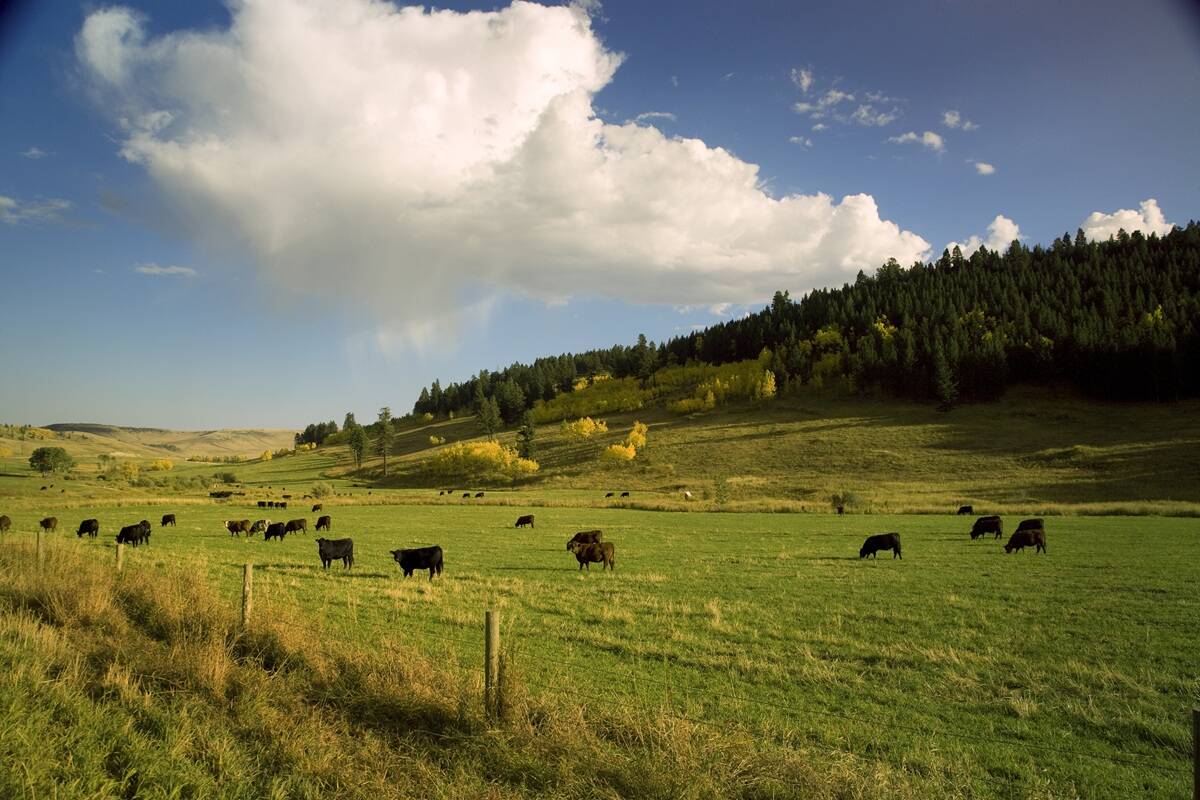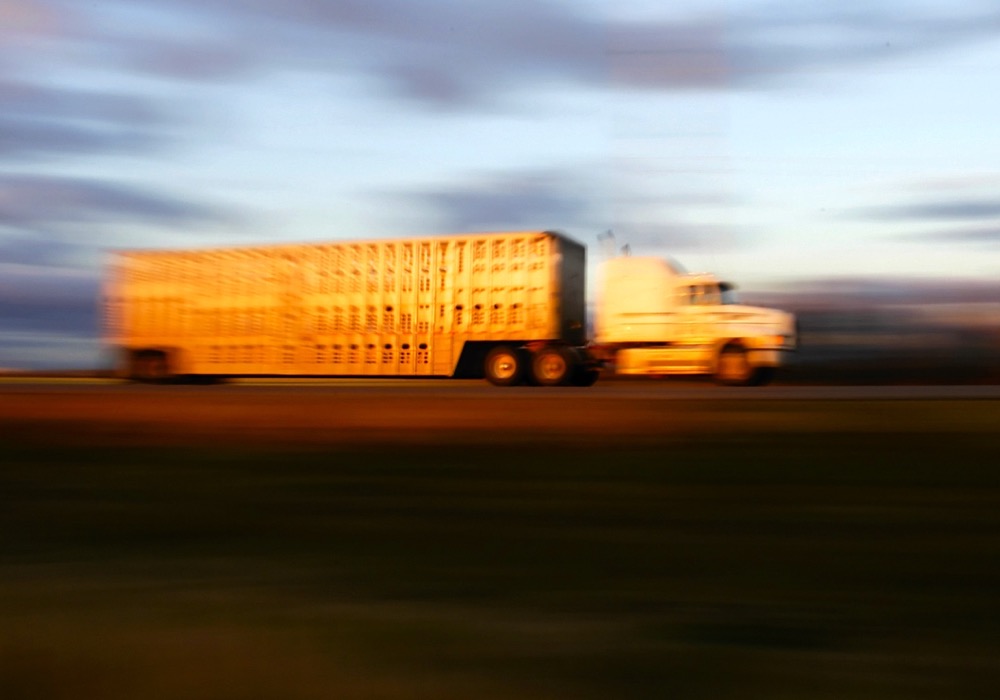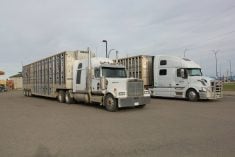Truck drivers have always travelled for long hours — especially when hauling livestock over the prairie or into the boreal forest of northern Ontario to their destination. Such trips illustrate the tricky balance between ensuring drivers get enough rest, yet complete the trip as quickly as possible for the sake of the animals they’re hauling.
However, the new year didn’t just usher in more blustery winter weather — new regulations for the trucking industry also left the livestock hauling industry cold.
At the start of 2023, federal regulations for trucks travelling between Canadian provinces and territories came into enforcement, requiring drivers to log the number of hours spent on the road into an electronic log device, which replaced paper log books. With these regulations, drivers may remain at the wheel for 13 hours, but then they must take 10 hours of rest, eight of which have to be consecutive. The goal is to fight trucker fatigue and to ensure safety on the road.
Read Also

Are you a competitive supplier of weaned beef calves?
Beef farmers and ranchers need to strategically manage costs to achieve and maintain profitability.
These changes raise challenges to the cattle industry, however — especially for those in the livestock markets.
The fall run
On the morning of May 13, people sit around in the conference center of the Pomeroy Hotel in Olds, Alta. Rick Wright with the Livestock Markets Association of Canada sits at the front of the room and speaks to the crowd about the issues the changes to the electronic logs have caused for the auction marts.
He says one of the main concerns is the capacity of smaller centres that may have to accommodate cattle when truckers are resting, and how these regulations could affect the fall run.
“We don’t have enough cattle truckers as it is,” Wright says. “Cattle are moving great distances in Canada these days and we have changes in the feed and water rest regulations, and now putting in these really strict hours of service regulations has handcuffed the trucking industry and the markets, especially in the fall run. I don’t know how we’re ever going to get all the cattle moved.”
With smaller auction marts, the main issue is truckers unloading the cattle during their eight hours of rest into these places, where there might not be enough infrastructure for cattle or people working to help out.
These regulation changes may cause a variety of problems going anywhere, but especially when trucks are going to Thunder Bay, Ont., and further into southern Ontario. Once past Winnipeg, Man., there are not many places for truckers to stop before they get to Thunder Bay. And with the fall run coming up, there’s concern that Thunder Bay won’t be able to manage all the cattle going east.
“Anything west of about Moose Jaw has to stop in Manitoba to either switch loads or reset for eight hours and then reload again, go to Thunder Bay, offload, and reset again,” Wright says. “So we’re unloading those cattle one more time in the trip and we know from scientific studies in the past that there’s no advantage to unloading those cattle for the cattle. It’s harder on them. The sooner we get them to their final destination, the better it is.”
Concerns in Ontario
Jack Chaffe, the president of Beef Farmers of Ontario, has been working on lobbying different organizations and levels of government against this issue, as well. The concern with Thunder Bay is a prominent one for him in Ontario.
“The truckers, for one, need to make sure at the rest stop in Thunder Bay, they need to call ahead there to pre-book their loads so they can schedule loads for unloading and loading so there’s not trucks sitting there waiting,” he says.
Chaffe says having another rest stop in northern Ontario would help the problem — although other organizations have suggested having a second one in Thunder Bay, Chaffe thinks the Cochrane, Ont. area would also be a good spot for a rest stop.
As well, he thinks there needs to be more accommodation for truckers in general in northern Ontario.
“It’s not like when you drive through Alberta and Saskatchewan, you see a lot more (rest stops) along the Trans Canada (highway) than you do in northern Ontario. We’re going to have to look at that, and that would be some lobbying we’ll have to do with our provincial government to have those added. And that’s not just for livestock haulers, that would be a benefit for people hauling freights and everything.”
CCA voices concerns
The Canadian Cattle Association has been in conversation with Transport Canada about this issue, as well. Ryder Lee, the general manager of the CCA, says a main concern for them is the welfare of the livestock.
“Whether there’s vehicle problems or construction or whatever it is that puts the driver over their hours, we want to make sure that they can get those cattle to where they need to get to, even if they do go over their hours,” Lee says.
He echoed what Chaffe said about the need for more rest stops in northern Ontario if regulations are to remain the same — and for drivers passing through that area to be able to make the best decision for the livestock they’re transporting.
“If you’re in between Thunder Bay and Sault Ste. Marie, there aren’t a lot of places that a) that’ll handle a transporter, but b) that can handle your livestock if you need to deal with them, so the best thing generally is getting that trip done.
“We don’t want a driver (who) does make that decision to be dinged with a fine for doing the right thing for the animals.”
U.S. regulations
Wright, Chaffe and Lee all say they feel the best course of action for hours of service when it comes to electronic logs is to adopt a similar practice to the U.S. There, drivers must take mandated 30-minute breaks after eight hours of driving and can drive for a maximum of 11 hours in a 14-hour window. However, there is an exemption called the 150-air-mile radius exemption which includes transporting agricultural products.
This exemption means drivers have a 150-air-mile radius where they don’t have to log their hours of service. Only once they cross that air-mile radius do they have to start logging their hours.
For example, when hauling livestock, truckers who may be stuck in a lineup at the sales yard won’t have to count those hours waiting to load in their hours of service.
This exemption is only applicable for trips that are longer than the 150-air-mile radius. Additionally, in the U.S., this exemption still applies if drivers are coming from Canada. However, because this exemption doesn’t exist in Canada, the same is not true the other way around.
“We’re basically trying to align with the U.S. where we would have that 150-mile radius from where the drivers are picking up their loads and where they’re delivering before the service hours start,” says Chaffe. “It would just simplify things.”
Lee says aligning Canadian practices with what is done in the U.S. isn’t just important for the welfare of the cattle and the people that are impacted by this issue, but also for the competitiveness of Canada.
“Make sure that the rules that we’re beholden to following are clear and delivered consistently across the country and that they’re competitive with our competitors,” Lee says. “That’s a constant conversation we have in Ottawa, around making sure the rules in Canada are both written and delivered in a way that is positive for our competitiveness as much as possible.”
Lobbying
Lee, Chaffe and Wright will continue to talk with Transport Canada.
“It’s a federal regulation but it’s provincial enforcement. So, we’ve got that federal-provincial cross-reference stuff that always seems to get in the road, too,” Wright says.
Lee says, for now, they are focusing on getting clarification. “We continue to ask for things to be the same on either side of the border so we don’t have to change how we’re operating from one day to the next, depending on which side of the border we’re on,” he says. “But in the meantime, some clarity on enforcement would go a long way.”
But it’s a long road, and the fall is coming fast. With cattle prices at a record high, the fall run at auction marts could be even busier — something that worries Wright.
“We’ve seen the effects of it and coming into the fall run, we have a lot of cattle moving great distances and it’s going to be problematic,” Wright says.
At the Livestock Markets Association convention in May, producers and members of the industry discussed the issue and how to move forward with it, but Wright says seeing much change without the support of the trucking industry is unlikely, and trucking companies need to step up to voice their concerns on the matter.
“There seems to be very little want from a lot of the trucking guys to deal with it,” he pointed out at the convention.

















